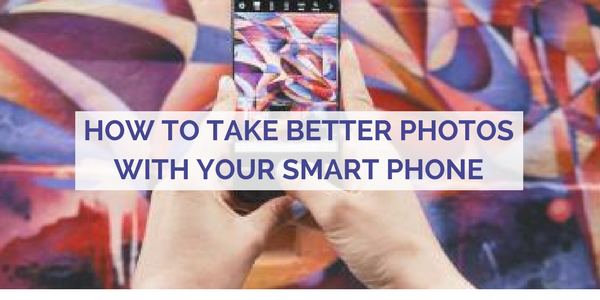
Smartphones these days, give you the power of high-quality SLR cameras. But do you know how to get the best out of them? This guide explains the basic principles of photography and shares some top tips on how to supercharge your smartphone photography.
Make friends with your camera
First things first, use your smartphone camera as often as you can. The only poor pictures are those you don’t take. Take pictures you wouldn’t normally take and look for the unexpected. Play around with the settings and other functions on your smartphone camera. Practice makes perfect after all.
Three, it’s the magic number
One of the easiest ways to improve your mobile photos is to turn on the camera's gridlines. It superimposes a series of lines on the screen of your smartphone's camera that are based on the “rule of thirds” - according to this principle an image should be broken down into thirds, both horizontally and vertically, so you have nine parts in total. If you place points of interest in these intersections or along the lines, your photo will be more balanced and level and the viewer will be more naturally drawn to the photo.
Keep it simple
Many of the best photos include just one, interesting subject. So when taking a picture of a subject, spend some extra time setting up the shot. Some professional photographers say that the subject shouldn’t fill the entire frame and that two-thirds of the photo should be negative space, that helps the subject stand out even more.
Embrace the negative
Following on from the last point, "Negative space" simply refers to the areas around and between the subjects of an image, and it can take a photo from "good" to "great”. When you include a lot of empty space in a photo, your subject will stand out more and evoke a stronger reaction from your viewer. Need ideas for negative space? Perhaps a large expanse of open sky, water, an empty field, or a large wall.
Leading lines
In some photos, there's a line that draws the viewer's eye toward a certain part of the frame. Those are called leading lines. They can be straight or not, think staircases, building facades, train tracks, roads, or even a path through the woods. Leading lines are great for creating a sense of depth in an image, and you can make your photo look purposefully designed, even if you just happened to come upon a really cool shape by accident.
Different Perspectives
Taking photos from a unique, unexpected angle can make them more memorable, it creates an illusion of depth or height with the subjects. It also makes the image stand out since most mobile photos are taken either straight on or from a bird's eye view. Try taking a photo directly upward and playing with the sky as negative space. Or, you can try taking it at a slight downward angle.
Repetition
Repetitive patterns are very pleasing to the eye, they appear whenever strong graphic elements are repeated over and over again, like lines, geometric shapes, forms, and colours. These patterns can make a strong visual impact, and photographing something like a beautiful, tiled floor can be enough to create a striking image.
Go for gold
For an amazing landscape photo, your best bet is the golden hour, the hour around sunrise or sunset. The sun is low and has a warm tone that brings out details. To use the sun to your advantage any time of day, look for pockets of light, someone walking down a street in a slant of light makes a powerful image.
Lemme take a selfie
Hold the phone high with your arm extended to prevent a double chin. If it’s sunny, move into the shade. Sunlight can cause your face to be overexposed or cast a harsh shadow and make you squint. The best way to take a full body selfie is with the camera out of your hand, propped against books or something else to keep it upright, and using a timer.
Steal
Pick your favourite photos on Pinterest and Instagram and try and compose similar shots yourself. You’ll be amazed at how good your photos will look if you have a simple framework to follow. It will also give you the inspiration to vary your photography style.
Written by Mike Pye